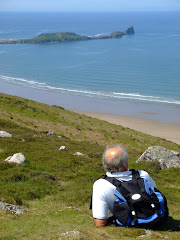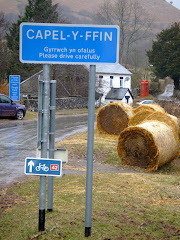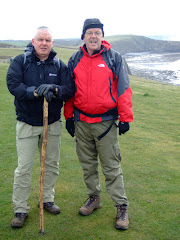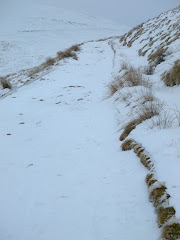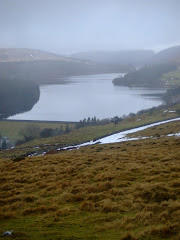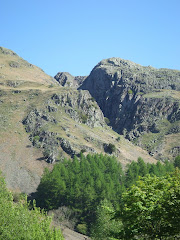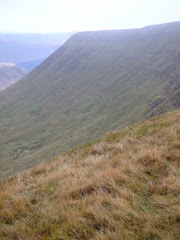
The spectacularly stunning scenery of the secluded Vale of Ewyas was an appropriate introduction to the next few hours that were spent in the Black Mountains. The narrow approach road at the foot of a magnificent example of a glacial valley eventually leading to Llanthony Priory.
A partly ruined former Augustinian priory, it lies seven miles north of Abergavenny on an old road to Hay on Wye. The priory dates back to around the year 1100 and eventually became one of the great medieval buildings in Wales, in a mixture of Norman and Gothic architectural styles.

The weather which was dry and mild, meant that this was the first real walk of Spring. The path to Red Daren starts to the west wing of the Priory and takes you through two lower open fields. Here, the climb starts to become really steep before joining a path at the base of the mountain. Climbing over 1200 feet it took about 35 minutes to eventually reach the Hatterall Ridge, which forms the border between Powys and Gwent in Wales and Herefordshire in England. This ridge then followed the Offa's Dyke Path which is a more sedate ramble at this particular section. On the west side of the ridge is the Vale of Ewyas, and on the east side is the Olchon Valley.

King Offa was one of the great rulers of Anglo-Saxon times and someone who was able to raise a workforce and resources sufficient enough to construct such an earthwork Dyke is a testament to his power. A massive linear earthwork, roughly following some of the current border between England and Wales. In places, it is up to 65 feet (20 m) wide. In the 8th century it formed some kind of 'boundary' between the Anglian kingdom of Mercia and the Welsh kingdom of Powys. It is generally accepted that much of the earthwork can be attributed to Offa, who was King of Mercia from 757 to 796.
A major survey of the Dyke in 1955 confirmed that it ran from the estuary of the River Dee in the north to the River Wye in the south (approximately 150 miles or 240 kms). The dyke is not continuous, being built only in areas where natural barriers did not already exist.
 The ridge walk across the top of Red Daren was really easy with excellent views to the low lands of Herefordshire in the east. After a brief coffee break at the trig point, a further few miles stroll across the ridge to a stone sign post that mark's the route to Capel-Y-Ffin, where you can leave this section of Offa's Dyke path. This descent was much steeper than the climb from Llanthony Prior and would be a really hard slog to access the ridge from Vision Farm, which inspired Brice Chatwin's novel 'On the Black Hill'. In really good weather conditions and in stunning surroundings it was really quiet with only a Dutch couple on the ridge and an English couple climbing up the path from Capel-Y-Finn passing in the opposite direction.
The ridge walk across the top of Red Daren was really easy with excellent views to the low lands of Herefordshire in the east. After a brief coffee break at the trig point, a further few miles stroll across the ridge to a stone sign post that mark's the route to Capel-Y-Ffin, where you can leave this section of Offa's Dyke path. This descent was much steeper than the climb from Llanthony Prior and would be a really hard slog to access the ridge from Vision Farm, which inspired Brice Chatwin's novel 'On the Black Hill'. In really good weather conditions and in stunning surroundings it was really quiet with only a Dutch couple on the ridge and an English couple climbing up the path from Capel-Y-Finn passing in the opposite direction. The walk was completed with a trek down the deserted road back to Llanthony Prior, where this handsome little follow participated in lunch.














